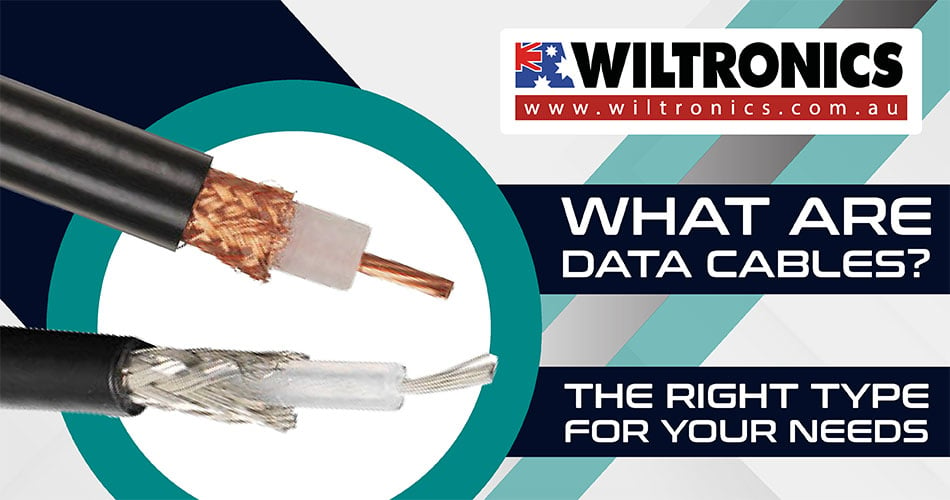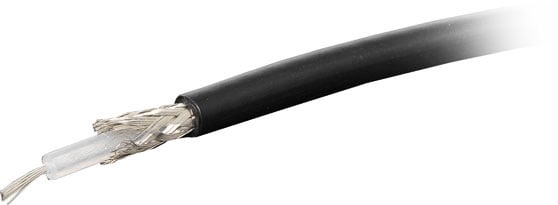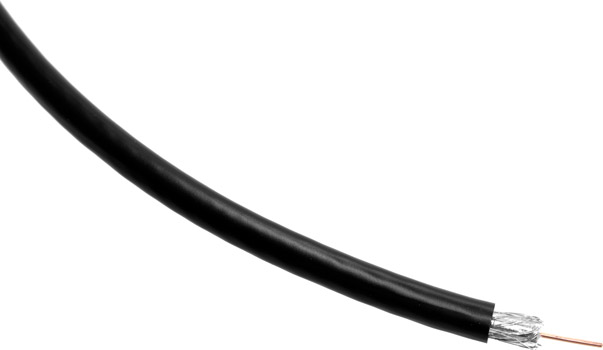What Are Data Cables: The Right Type of Data Cable For Your Needs
November 29, 2021

The type of data cable you need depends on the environment.
No computer is complete without data cables. These wired accessories enable a PC to communicate with its various elements.
With data wires, the signal travels along the wire from one device to another. This additionally lets a computer connect with different computers.
But you cannot just use any cable to make this connection between hardware elements. For one thing, there are different types of data cables for specific uses.
In this post, we are going to break down the different types, as well as define what data cable is. If you want to know what type of data cable suits best for you, keep on reading!
The Basics of Data Cables
A transmission medium is required to carry information from source to destination. Cables are one of the commonly used tools for transferring data along a channel.
Cabling, in general, provides connectivity between servers and computers. Hence why data cables play a significant part in network devices.
A data cable transmits information through a binary electrical transmission signal between systems. This binary data consists of a sequence of “1s” and “0s”—sent as electric signals between two locations.
As mentioned, the type of data cable you need depends on the environment. For instance, ethernet cables will not work if you wish to connect a printer to your computer.
This type of cable is only ideal for transferring data between computers in a network. What you need is a USB-type or coaxial cable to connect a peripheral device like a printer into your PC.
Inner communication
Each type of data cable allows communication between hardware components within a computer. A great example of this is storage media like hard drives that can be connected to a motherboard. This enables the electrical transfer of data to and from the hard drive.
Network communication
Data cables also work by connecting multiple computers across a network. An ethernet cable perfectly fits this category as it connects computers via a network interface card associated with the PC.
Peripheral cabling
Peripherals like cameras, printers and scanners also connect via a data cable. These data cables may be USB or in the form of a firewire.
Wired vs wireless data cables
Transmission media used can be wired or wireless.
In wired transmission, cables are for transferring signals. In contrast, in wireless communication, electromagnetic waves sends data from one device to another.
There are three types of cables for wired transmission. Each has its own characteristics, making them identifiable. These are:
- Twisted pair cable
- Coaxial cable
- Optic cables
Different Types of Data Cables
1. Twisted Pair Cables
Telecommunications and computer networks use twisted-pair cables for transmitting data. This data cable type consists of two copper cores, each with its own plastic insulation and twisted together.
One wire carries the signal, and the other one works as a ground reference. The advantage of twisting is that both wires are equally affected by external influences. It helps protect the data communications from signal degradation.
There are two main types of twisted-pair cables:
- Shielded Twisted Pair (STP). This cable has one extra metal shield covering the insulated twisted pair conductors.
- Unshielded Twisted Pair (UTP). This one does not have a metal shield.
2. Coaxial Cables
Also known as coax, coaxial cables are used in older computer networks. This type of data cable carries more high-frequency signals than twisted pair cables, where a signal cable can carry data up to 600 Mbps.
It has a central core conductor of solid wire enclosed in an insulator, covered by an outer conductor of metal foil. Surrounding the core is an insulator and shield to preserve the data communication signal.
A coaxial cable is basically a large, round wire with an internal core wire that sends information. It is ideal for providing television communication data.
But it requires a special connector called a BNC connector—used to connect the end of the cable to a device.
Moreover, these cables are categorised by RG (Radio Government) ratings. RG-59 for Cable TV, RG-58 for thin Ethernet, and RG-11 for thick Ethernet.

RG174AU Coax Cable Per Metre
Product code: CB2719
This coax cable is commonly used for Wi-Fi pigtails; it is more flexible but has higher loss than RG58 cable.

RG58 Coax Cable 50 ohm Per Metre
Product code: CB2711
This coax cable is suitable for radiocommunication and amateur radio, such as:
- Thin Ethernet (10BASE2)
- NIM electronics

RG59 Coaxial Cable 75ohm
Product code: CB30-RG59
The RG59 coaxial cable is suitable for television and CCTV/security camera applications. Sold per meter, in 100m rolls, or a 305m pull box for easy dispensing.

RG6 Quad Shielded Coaxial Cable Black
Product code: CB303x
The RG6 coaxial cable has a much higher capacity over longer distances than the RG59 coax. It is virtually immune to external interference due to its four layers of shielding.
3. Fibre Optic Cables
Fibre optic cables transmit data signals in the form of light. This type of data cable is extensively used by cable and telecom companies to provide a fast connection to the Internet.
It is lightweight and does not have the signal degradation problems that the other two cables have. It can be very fragile, though, as it has glass parts and is more expensive.
But this makes it a great choice of data cable if you want something that sends high speed, longer distance signals with little interference.
It utilises light and glass as the mechanics for data transmissions. This light channel consists of two main parts: core and cladding.
The cladding acts as a protective cover to the core. But the difference in density of core and cladding is that a beam of light moving through the core is reflected off the cladding—not refracted.
There are two types of connectors for fibre optic cables:
- SC connector for cable TV
- ST connector for connecting cable to network devices
The Right Type of Data Cable For You
Data cables can transmit telephone signals, Internet communication and cable TV signals. Even so, each type performs or operates in different ways.
If your task is related to Ethernet or LAN networks, you will likely want twisted pair cables. But if you want something with higher frequency and can work on the television, go for coaxial cables. Lightweight, with wide bandwidth and is cost-effective—fibre optic cables are the ideal choice if these are what you want.
Connecting the wrong type of cable may cause hardware issues. Hence why it is crucial to know the ideal kind of data cable you use for a specific task.
We hope this guide will help you find the right type of data cable you need for your project!
© Electrotech Brands Pty Ltd 2021


Write a Comment
You must be logged in to post a comment.